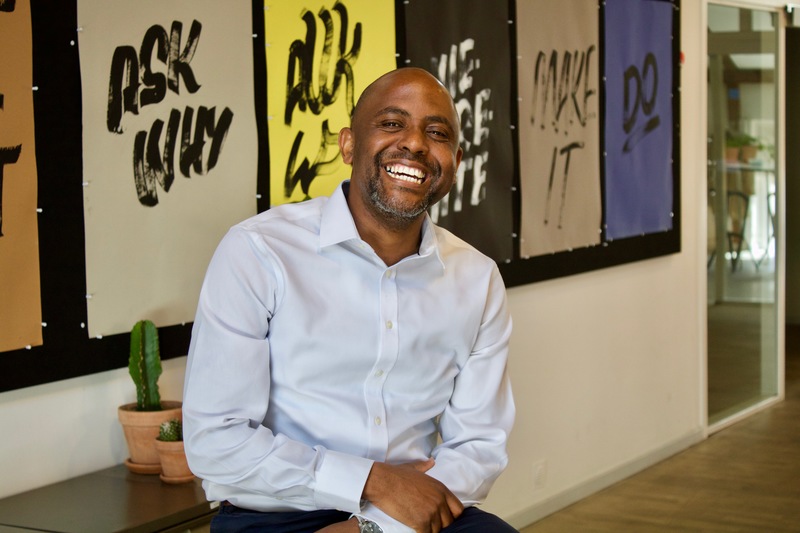
by Robyn Bolton | Jul 23, 2025 | Leadership, Leading Through Uncertainty, Stories & Examples
What does a lightning strike in a Spanish forest have to do with your next leadership meeting? More than you think.
On June 14, 2014, lightning struck a forest on Spain’s northeast coast, only 60 miles from Barcelona. Within hours, flames 16 to 33 feet high raced out of control toward populated areas, threatening 27,000 acres of forest, an area larger than the city of Boston.
Everything – data, instincts, decades of firefighting doctrine – prioritized saving the entire forest and protecting the coastal towns.
Instead, the fire commanders chose to deliberately let 2,057 acres, roughly the size of Manhattan’s Central Park, burn.
The result? They saved the other 25,000 acres (an area the size of San Francisco), protected the coastal communities, and created a natural firebreak that would protect the region for decades. By accepting some losses, they prevented catastrophic ones.
The Fear Trap That’s Strangling Your Business
The Tivissa fire’s triumph happened because firefighters found the courage to escape what researchers call the “fear trap” – the tendency to focus exclusively on defending against known, measurable risks.
Despite research proving that defending against predictable, measurable risks through defensive strategies consistently fails in uncertain and dynamic scenarios, firefighter “best practices” continue to advocate this approach.
Sound familiar? It should. Most executives today are trapped in exactly this pattern.
We’re in the fire right now. Financial markets are yo-yoing, AI threatens to disrupt everything, and consumer behaviors are shifting.
Most executives are falling into the Fear Trap by doubling down on protecting their existing business and pouring resources into defending against predictable risks. Yet the real threats, the ones you can’t measure or model, continue to pound the business.
While you’re protecting last quarter’s wins, tomorrow’s disruption is spreading unchecked.
Four Principles for Creative Decision-Making Under Fire
The decision to cede certain areas wasn’t hasty but based on four principles enabling leaders in any situation to successfully navigate uncertainty.
PRINCIPLE 1: A Predictable Situation is a Safe Situation. Stop trying to control the uncontrollable. Standard procedures work in predictable situations but fail in unprecedented challenges.
Put it in Practice: Instead of creating endless contingency plans, build flexibility and agility into operations and decision-making.
PRINCIPLE 2: Build Credibility Through Realistic Expectations. Reducing uncertainty requires realism about what can be achieved. Fire commanders mapped out precisely which areas around Tivissa would burn and which would be saved, then communicated these hard truths and the considered trade-offs to officials and communities before implementing their strategy, building trust and preventing panic as the selected areas burned.
Put it in practice: Stop promising to protect everything and set realistic expectations about what you can control. Then communicate priorities, expectations, and trade-offs frequently, transparently, and clearly with all key stakeholders.
PRINCIPLE 3: Include the future in your definition of success: Traditional firefighting protects immediate assets at risk. The Tivissa firefighters expanded this to include future resilience, recognizing that saving everything today could jeopardize the region tomorrow.
Put it in practice: Be transparent about how you define the Common Good in your organization, then reinforce it by making hard choices about where to compete and where to retreat. The goal isn’t to avoid all losses – it’s to maximize overall organizational health.
PRINCIPLE 4: Use uncertainty to build for tomorrow: Firefighters didn’t just accept that 2,057 acres would burn – they strategically chose which acres to let burn to create maximum future advantage, protecting the region for generations.
Put it in practice: Evaluate every response to uncertainty on whether it better positions you for future challenges. Leverage the disruption to build capabilities, market positions, and organizational structures that strengthen you for future uncertainty.
Your Next Move
When the wind shifted and the fire exploded, firefighters had to choose between defending everything (and likely losing it all) or accepting strategic losses to ensure overall wins.
You’re facing the same choice right now.
Like the firefighters, your breakthrough might come not from fighting harder against uncertainty, but from learning to work with it strategically.
What are you willing to let burn to save what matters most?

by Robyn Bolton | May 10, 2025 | Innovation, Leadership
You need friction to create fire. It’s true whether you’re camping or leading change inside an organization. Yet most of us avoid conflict—we ignore it, smooth it over, or sideline the people who spark it.
I’ve been guilty of that too, which is why I was eager to sit down with Laura Weiss, founder of Design Diplomacy, former architect and IDEO partner, university educator, and professional mediator, to explore why conflict isn’t the enemy of innovation, but one of its essential ingredients.
Our conversation wasn’t about frameworks or facilitation tricks. It was about something deeper: how leaders can unlearn their fear of conflict, lean into discomfort, and use it to build trust, fuel learning, and drive meaningful change.
So if conflict feels like a threat to alignment and progress, this conversation will show you why embracing it is the real leadership move.
_______________________________________________________________________________________________
Robyn Bolton: What’s the one piece of conventional wisdom about change that organizations need to unlearn?
Laura Weiss: The belief that change is event-driven. It’s not, except for seismic shifts like the Great Recession, the COVID-19 pandemic, 9/11, and October 7. It’s happening all the time! As a result, leading change should be seen as a continuous endeavor that prepares the organization to be agile when unforeseen events occur.
RB: Wow, that is capital-T True! What is driving this misperception?
LW: It’s been said that ‘managers deal with complexity, but leaders deal with change’. So, it all comes down to leadership. However, the prevailing belief is that a “leader” is the person who has risen to the top of the organization and has all the answers.
In many design professions, those who are promoted to leadership roles are exceptional at their craft. But evolving from an ‘individual contributor’ to leading others involves skills that can seem contrary to our beliefs about leadership. One is humility – the capability to say “I don’t know” without feeling exposed as a fraud, especially in professions where being a “subject matter expert” is expected. Being humble presents the leader as human, which leads to another skill: connecting with others as humans before attempting to ‘lead’ them. I particularly like Edgar Schein’s relationship-driven leadership philosophy as opposed to ‘transactional’ leadership, where your role relative to others dictates how you interact.
RB: From your experience, how can we unlearn this and lead differently?
LW: Leaders need to do three things:
- Be self-aware. After becoming a certified coach, it became clear to me that all leadership begins with understanding oneself. If you’re unaware of how you operate in the world, you certainly can’t lead others effectively.
- Be agile. Machiavelli famously asked: “Is it better to be loved or feared…?” Being a leader requires the ability to do both, operating along the ‘warmth-strength’ continuum, starting with warmth. There are six leadership styles a leader should be familiar with, in the same way that golfers know which golf club to use for a particular situation.
- Evolve. This means feedback – being willing to ask for it and receive it. Many senior leaders stop receiving feedback as they progress in their careers. But times change, and ‘what got you here won’t get you there.’ Holding up a mirror to very senior leaders who have rarely, if ever, received feedback, or have received it but didn’t really “get it,” is critical if they are to change with the times and the needs of their organization.
RB: Amen! I’m starting to sense a connection between leadership, innovation, and change, but before I make assumptions, what do you see?
LW: First, I want to acknowledge the thesis of your book that “innovation isn’t an idea problem, it’s a leadership problem” – 1000% agree with that!
One of the reasons I shifted from being an architect to focusing on the broader world of innovation was that I was curious about why some innovation initiatives were successful and some were not. Specifically, I was curious about the role of conflict in the creative problem-solving process because conflict is critical to bringing innovation and change to life. Yet, it’s not something most of us are naturally good at – in fact, our brain is designed to avoid it!
The biggest myth about conflict is that it erodes trust and undermines relationships. The opposite is true – when handled well, productive conflict strengthens relationships and leads to better outcomes for organizations navigating change.
Just as with innovation, the organizations that are most successful with change are the ones that consistently use productive conflict as an enabler of change.
To achieve this, organizations must shift from a reactive stance to a proactive one and become more “discovery-driven”. This means practicing iterative prototyping and learning their way forward. In my mind, innovation is a form of structured learning that yields something new with value.
RB: What role does communication play in leadership and conflict?
LW: Conflict is an inevitable part of the human experience because it reflects the tension between the status quo and something else that’s trying to emerge. It can appear even in the process of solving daily problems, so the ability to deal productively with conflict, from simple misunderstandings to seemingly intractable differences, is crucial.
The source code for effective conflict engagement is effective conversations.
_____________________________________________________________________________________________
The real challenge in leadership isn’t preventing conflict—it’s recognizing that conflict is already happening and choosing to engage with it productively through conversation
This conversation with Laura reminded me that innovation and change don’t just thrive on new ideas. They require leaders who are self-aware enough to listen, humble enough to ask for feedback, and courageous enough to stay in the tension long enough for something better to emerge.

by Robyn Bolton | Apr 21, 2025 | Innovation, Leadership
Innovation efforts get stuck long before they scale because innovation isn’t an idea problem. It’s a leadership problem. And one of those problems is that leaders are expected to spark transformation, without rocking the boat.
I’ve spent my career in corporate innovation (and wrote a book about it), so I was thrilled to sit down with Tendayi Viki, author of Pirates in the Navy and one of the most thoughtful voices on corporate innovation.
Our conversation didn’t follow the usual playbook about frameworks and metrics. Instead, it surfaced something deeper: how small wins, earned trust, and emotional intelligence quietly power real change.
If you’re tasked with driving innovation inside a large organization—or supporting the people who are—this conversation will challenge what you think it takes to succeed.
_______________________________________________________________________________________________
Robyn Bolton: You work with a lot of corporate leaders. What’s one piece of conventional wisdom they need to unlearn about innovation?
Tendayi Viki: That you need to start with a big bang. That transformation only works if it launches with maximum support and visibility from day one.
But we don’t think that way about launching new products. We talk about starting with early adopters. Steve Blank even outlines five traits of early evangelists: they know they have the problem, they care about solving it, they’re actively searching for a solution, they’ve tried to fix it themselves, and they have budget. That’s where momentum comes from.
But in corporate settings, I see leaders trying to roll out transformation as if it is a company-wide software update. I once worked with someone in South Africa who was introduced as the new head of innovation at a big all-hands event. He told me later, “I wish I hadn’t started with such a big bang. It created resentment—I hadn’t even built a track record yet.”
Instead of struggling and pushing change on people, I try to help leaders build momentum. Think of it like a flywheel. You start slow, with the right people, at the right points of leverage. You work with early adopter leaders, tell stories about their wins, invite others to join. Soon, you’re not persuading anyone—you’ve got movement.
RB: Have you seen that kind of momentum work in practice?
TV: A few great examples stand out.
Claudia Kotchka at P&G didn’t go around talking about design thinking when she started. She picked a struggling brand and applied the tools there. Once that project succeeded, people paid attention. More leaders asked for help. That success did the selling.
And there’s a story from Samsung that stuck with me. A transformation team was tasked with leading “big innovation,” but they didn’t start by preaching theory. They said, “Let’s help senior leaders solve the problems they’re dealing with right now.” Not future-state stuff—just practical challenges. They built credibility by delivering value, not running roadshows.
If you can’t find early adopters, then take one step back. Solve someone’s actual problem. People are always fans of solving their own problems.
RB: When you think about leaders who are good at building momentum, what qualities or mindsets do they tend to have?
TV: Patience is huge. This stuff takes time. And you have to set expectations with the people who gave you the mandate: “It’s not going to look like much at first—but it’s working.”
And I think you can measure momentum. Not just adoption metrics, but something simpler: how many people are coming to you without you pushing them? That’s real traction. You don’t have to chase them. They’re curious. They’ve seen the early wins.
Another big one is humility. You’ve got to respect the people who resist you. That doesn’t mean agreeing with them, but it means understanding. Maybe they need to see social proof. Maybe they’re waiting for cover from another leader. Maybe they’re not comfortable standing out.
None of that means they’re wrong. It just means they’re human. So work with the confident few first and bring in the rest when they’re ready.
RB: Have you always approached resistance that way?
TV: Oh no—I learned that one the hard way.
Early in my career, I was running a workshop at Pearson. I was beating up on this publishing group about how they’re going to get killed by digital, and they were arguing. It was a really difficult conversation, and I was convinced I was right and they were wrong.
Afterward, one of the leaders pulled me aside and said, “I don’t disagree with what you said. I think you’re right. But I didn’t like how you made us feel.”
And that was the moment. They weren’t resisting because of the content. They were reacting to how I delivered it. I made them feel stupid, even if I didn’t mean to. And their only move was to push back.
It took me years to absorb that lesson. But now I never forget: if people are resisting, check the emotional tone before you check the content.
RB: Last question. What is one thing you’d like to say to corporate leaders trying to drive innovation?
TV: Just chill!
Seriously. There’s so much *efforting* in corporate transformation. All the chasing, tracking, nudging, following up. “Have they responded to the email? Did you call them?” All that pressure to push, to prove.
But it reminds me of this Malcolm Gladwell podcast, Relax and Win, about San Jose State sprinters. Their coach taught them that to run their fastest, they had to stay relaxed. When you tense up, you actually slow down.
Innovation works the same way. Don’t force it. Build momentum. Let it grow. And trust it once it’s moving.
_____________________________________________________________________________________________
The real challenge in corporate innovation isn’t convincing people that change is needed—it’s helping them feel safe enough to join you.
This conversation with Tendayi reminded me that the most effective innovation leaders don’t lead with pressure or pitch decks. They lead with patience, empathy, and small wins that build momentum.

by Robyn Bolton | Mar 26, 2025 | Strategy, Uncategorized
It’s easy to get complacent about your strategy skills. After all, our yearly “strategic planning” processes result in quarterly “strategic priorities” that require daily “strategic decisions.” So, it’s reasonable to assume that we know what we’re doing when it comes to strategy development.
I’ll admit I did. After all, I’ve written strategic plans for major brands, developed strategies for billion-dollar businesses, and teach strategy in a Masters program.
I thought I knew what I was doing.
Then ChatGPT proved me wrong.
How it Began
My student’s Midterm assignment for this semester is to develop, recommend, and support a strategy for the companies they’ve studied for the past seven weeks. Each week, we apply a different framework – Strategy Kernel, SWOT, Business Model Canvas, Porter’s 5 Forces, PESTLE, Value Chain – to a case study. Then, for homework, they apply the framework to the company they are analyzing.
Now, it’s time to roll up all that analysis and turn it into strategic insights and a recommended strategy.
Naturally, they asked me for examples.
I don’t have a whole lot of examples, and I have precisely none that I can share with them.
I quickly fed The LEGO Group’s Annual Report, Sustainability Report, and Modern Slavery and Transparency Statements into ChatGPT and went to work.
Two hours later, I had everything needed to make a solid case that LEGO needs to change its strategy due to risks with consumers, partners, and retailers. Not only that, the strategy was concise and memorable, with only 34 carefully chosen words waiting to be brought to life through the execution of seven initiatives.
Two hours after that, all of my genius strategic analysis had been poured into a beautifully designed and perfectly LEGO-branded presentation that, in a mere six slides, laid out the entire case for change (which was, of course, supported by a 10-page appendix).
The Moment
As I gazed lovingly at my work, I felt pretty proud of myself. I even toyed with the idea of dropping a copy off at LEGO’s Back Bay headquarters in case they needed some help.
I chuckled at my little daydream, knowing no one would look at it because no one asked for it, and no implementers were involved in creating it.
That’s when it hit me.
All the reasons my daydream would never become a reality also applied to every strategy effort I’ve ever been part of.
- No one looks at your strategy because it’s just a box to check to get next year’s budget.
- No one asks for it because they’re already working hard to maintain the status quo. They don’t have the time or energy to imagine a better future when they’re just trying to get through today.
- No one responsible for implementing it was involved in creating it because strategy is created at high levels of the organization or outsourced to consultants.
What the strategy is doesn’t matter.*
What matters is how the strategy was created.
Conversation is the only way to create a successful, actionable, and impactful strategy.
Conversation with the people responsible for implementing it, they people on the ground and the front lines, the people dealing with the ripple effects of all those “strategic” decisions.
How It’s Going
Today, I’m challenging myself—and you—to make strategy a dialogue, not a monologue. To value participation over presentation. Because strategy without conversation isn’t strategy at all—it’s just a beautiful document waiting to be forgotten.
Who are you inviting into your next strategy conversation that isn’t usually there but should be? Share in the comments below.

by Robyn Bolton | Feb 3, 2025 | Innovation, Tips, Tricks, & Tools
If innovation (the term) is dead and we will continue to engage in innovation (the activity), how do we talk about creating meaningful change without falling back on meaningless buzzwords? The answer isn’t finding a single replacement word – it’s building a new innovation language that actually describes what we’re trying to achieve. Think of it as upgrading from a crayon to a full set of oil paints – suddenly you can create much more nuanced pictures of progress.
The Problem with One-Size-Fits-All
We’ve spent decades trying to cram every type of progress, change, and improvement into the word “innovation.” It’s like trying to describe all forms of movement with just the word “moving.” Sure, you’re moving but without the specificity of words like walking, running, jumping, bounding, and dancing, you don’t know what or how you’re moving or why.
That’s why using “innovation” to describe everything different from today doesn’t work.
Use More Precise Language for What and How
Before we throw everything out, let’s keep what actually works: Innovation means “something new that creates value.” That last bit is crucial – it’s what separates meaningful change from just doing new stuff for novelty’s sake. (Looking at you, QR code on toothpaste tutorials.)
But, just like “dancing” is a specific form of movement, we need more precise language to describe what the new value-creating thing is that we’re doing:
- Core IMPROVEMENTS: Making existing things better. It’s the unglamorous but essential work of continuous refinement. Think better batteries, faster processors, smoother processes.
- Adjacent EXPANSIONS: Venturing into new territory – new customers, new offerings, new revenue models, OR new processes. It’s like a restaurant adding delivery service: same food, new way of reaching customers.
- Radical REINVENTION: Going all in, changing multiple dimensions at once. Think Netflix killing its own DVD business to stream content they now produce themselves. (And yes, that sound you hear is Blockbuster crying in the corner.)
Adopt More Sophisticated Words to Describe Why
Innovation collapsed because innovation became an end in and of itself. Companies invested in it to get good PR, check a shareholder box, or entertain employees with events.
We forgot that innovation is a means to an end and, as a result, got lazy about specifying what the expected end is. We need to get back to setting these expectations with words that are both clear and inspiring
- Growth means ongoing evolution
- Transformation means fundamental system change (not just putting QR codes on things)
- Invention means creating something new without regard to its immediate usefulness
- Problem Solving means finding, creating, and implementing practical solutions
- Value Creation means demonstrating measurable and meaningful impact
Why This Matters
This isn’t just semantic nitpicking. Using more precise language sets better expectations, helps people choose the most appropriate tools, and enables you to measure success accurately. It’s the difference between saying “I want to move more during the day” and “I want to build enough endurance to run a 5K by June.”
What’s Next?
As we emerge from innovation’s chrysalis, maybe what we’re becoming isn’t simpler – it’s more sophisticated. And maybe that’s exactly what we need to move forward.
Drop a comment: What words do you use to describe different types of change and innovation in your organization? How do you differentiate between what you’re doing and why you’re doing it?




